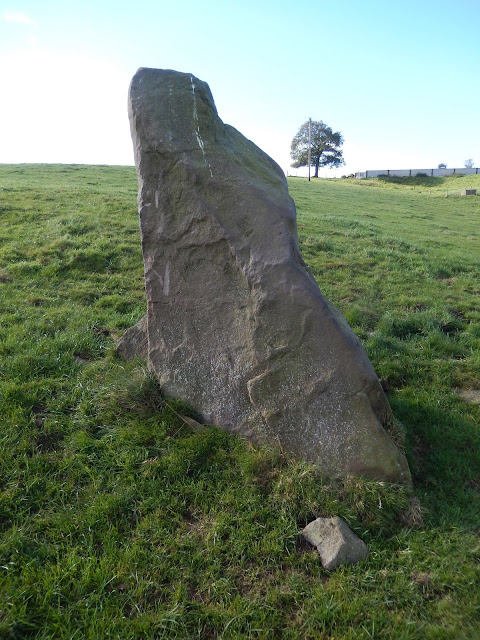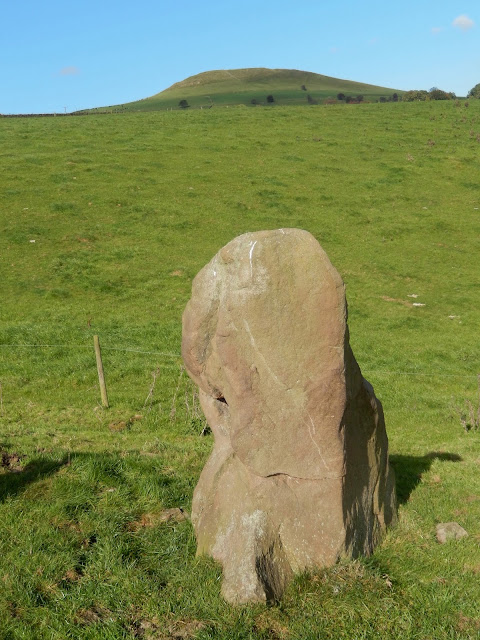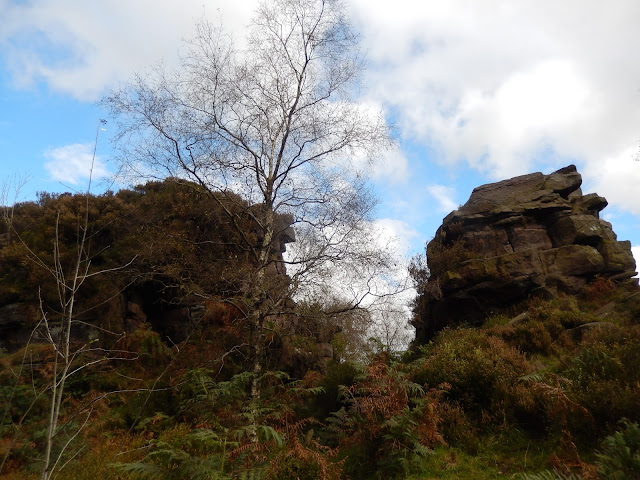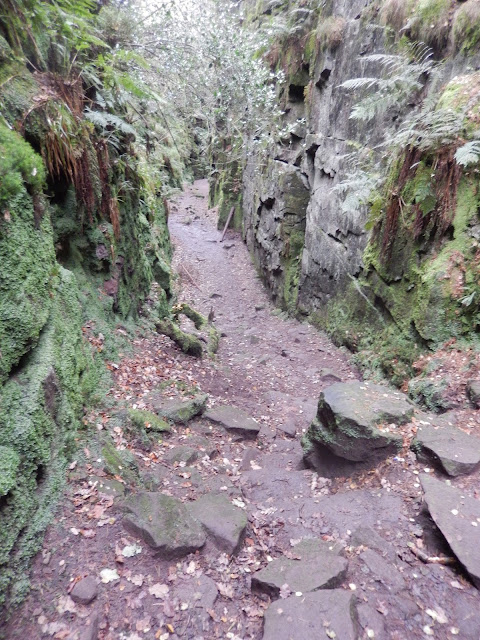 |
| The centre monolith and some of its cobbls |
 |
| A close up of the centre monolith, as a bed of smaller cobble stones than those in the circle around it |
 |
| The monolith with Shutlingsloe in the background |
The second site we visited was a relatively unknown one, the Allgreave Menhir, which was discovered partially buried on land belong to Burnt House Farm and re-erected close to where it was found. It is about one mile south-east of the Bullstones and bears a resemblance to the great standing stones at the Bridestone Burial Chamber some 4.6 miles to the south-west (which we were to visit another day). The stone is on a north-south axis, with a flat face on the south side, a sun-face, and a tapering body of feminine curves to the north. On the west side we found a niche that contained carved indentations that fitted our hands. The reasons for the flat face and the niche are obviously lost to time, but I can think of a possible use, which I may include in my book and so won’t reveal at the moment.
 |
| The east side of the Allgreave Menhir, showing its tapering curves |
 |
| The south side ‘sun-face’ of the menhir |
 |
| My hand in the niche with its curved indentations and guidance protusion |
 |
| The trail to Castle Rock |
 |
| One section of Castle Rock |
 |
| Another section |
 |
| Grevel descending into Lud’s Church |
 |
| View of the bend in the chasm which is at the widest, deepest part |
 |
| View to one end, from the bend |
 |
| View to the other end |
Earl
NB: I had inserted a video of the view from the top of Castle Rock, but it doesn’t seem to work on some devices, so have had to delete it. Sorry about that.

It sounds fascinating,Earl, especially Lud's Church. I hope this will feature in your book as the sense of awe you describe is marvellous. One of the 'thin' places.
Thanks Jean
Thanks, Jean. Lud's Church does feature in the book, though changed somewhat. I like your phrase 'thin places'. Lud's Church is definitely one of them! Blessings